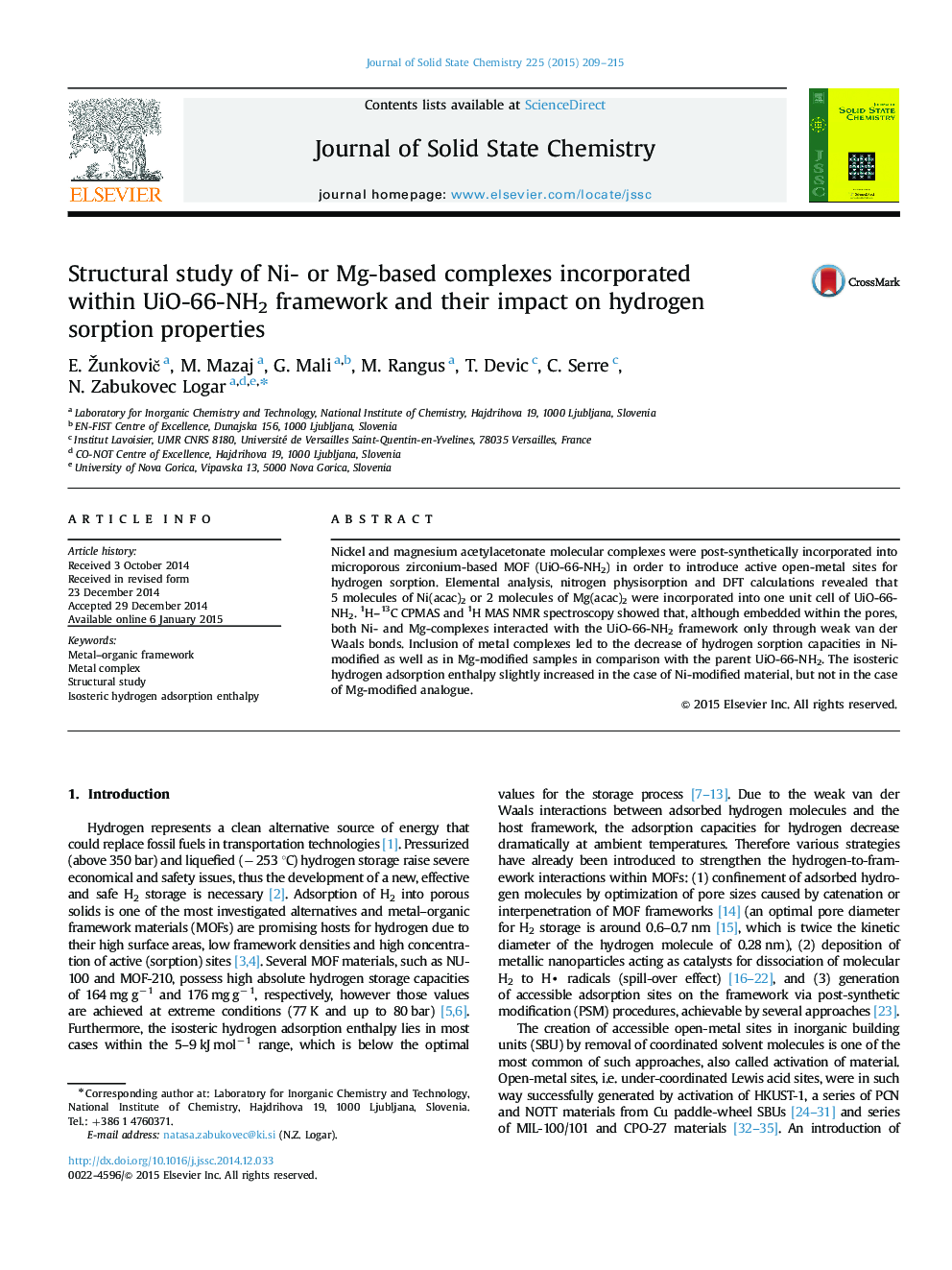| Article ID | Journal | Published Year | Pages | File Type |
|---|---|---|---|---|
| 1331621 | Journal of Solid State Chemistry | 2015 | 7 Pages |
•Mg- and Ni-acetylacetonate molecules embedded in the pores of UiO-66-NH2 by PSM.•Molecules of complexes interact with framework only by van der Waals interactions.•Type/structure of deposited metal-complex impact hydrogen enthalpy of adsorption.
Nickel and magnesium acetylacetonate molecular complexes were post-synthetically incorporated into microporous zirconium-based MOF (UiO-66-NH2) in order to introduce active open-metal sites for hydrogen sorption. Elemental analysis, nitrogen physisorption and DFT calculations revealed that 5 molecules of Ni(acac)2 or 2 molecules of Mg(acac)2 were incorporated into one unit cell of UiO-66-NH2. 1H–13C CPMAS and 1H MAS NMR spectroscopy showed that, although embedded within the pores, both Ni- and Mg-complexes interacted with the UiO-66-NH2 framework only through weak van der Waals bonds. Inclusion of metal complexes led to the decrease of hydrogen sorption capacities in Ni-modified as well as in Mg-modified samples in comparison with the parent UiO-66-NH2. The isosteric hydrogen adsorption enthalpy slightly increased in the case of Ni-modified material, but not in the case of Mg-modified analogue.
Graphical abstractA post-synthesis impregnation of Mg- and Ni-acetylacetonate complexes performed on zirconium-based MOF UiO-66-NH2 does influence the hydrogen sorption performance with respect to the parent matrix. The structural study revealed that Mg- and Ni-acetylacetonate molecules interact with zirconium-terephthalate framework only by weak interactions and they are not covalently bonded to aminoterephthalate ligand. Still, they remain confined into the pores even after hydrogen sorption experiments.Figure optionsDownload full-size imageDownload as PowerPoint slide
